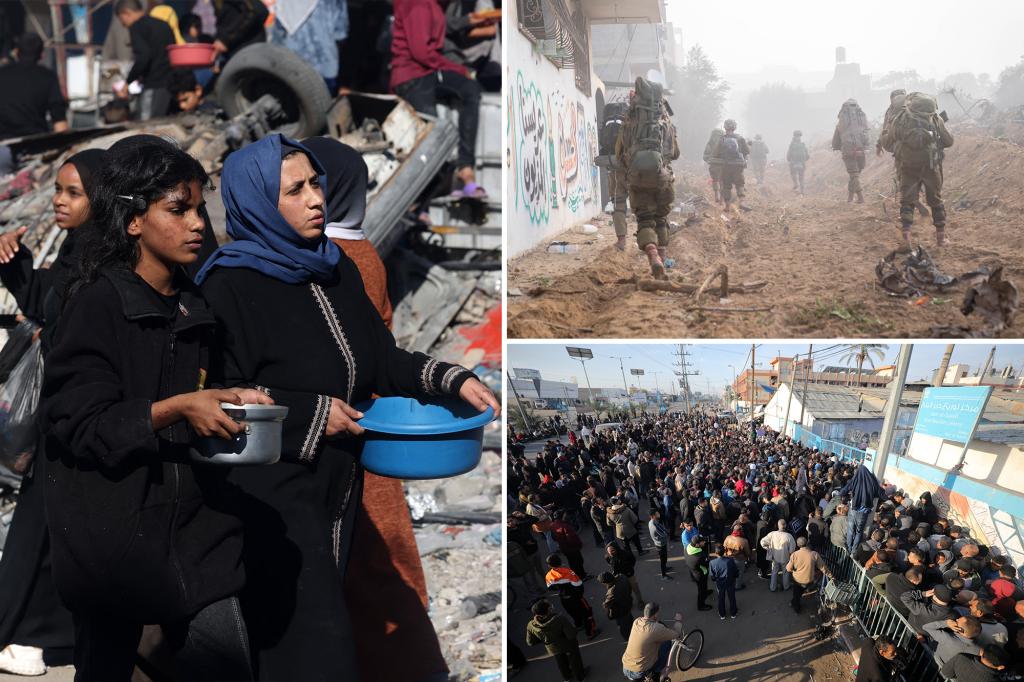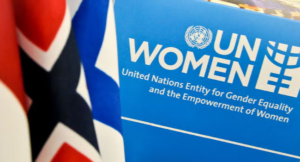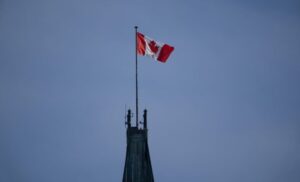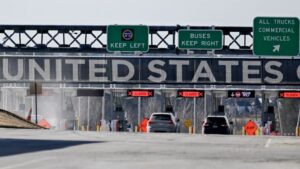
Israeli tanks and warplanes carried out new strikes on southern Gaza on Tuesday, and the U.N. said aid flows to Palestinians facing growing hunger had largely dried up because of the intensity of fighting in the Israel-Hamas war, now in its third month.
In Khan Younis, southern Gaza’s main city which Israel troops began storming last week, residents said tank shelling was now focused on the city centre. One said tanks were operating on Tuesday morning in the street where the house of Yahya Al-Sinwar, Hamas’ leader in Gaza, is located.
An elderly Palestinian, Tawfik Abu Breika, said his residential block in Gaza’s Khan Younis was hit without warning by an Israeli air strike on Tuesday that had brought down several buildings and caused casualties.
“The world’s conscience is dead, no humanity or any kind of morals,” Breika told Reuters as neighbours sifted through rubble. “This is the third month that we are facing death and destruction…This is ethnic cleansing, complete destruction of the Gaza Strip to displace the whole population.”
Further south in Rafah, which borders Egypt, health officials said 22 people including children were killed in an Israeli air strike on houses overnight. Civil emergency workers were searching for more victims under the rubble.
Residents said the shelling of Rafah, where the Israeli army this month ordered people to head for their safety, was some of the heaviest in days.
“At night we can’t sleep because of the bombing and in the morning we tour the streets looking for food for the children, there is no food,” said Abu Khalil, 40, a father of six.
Gazans were battling hunger and thirst to survive, resident Mohammed Obaid said as he inspected debris in Rafah.
“There’s no electricity, no fuel, no water, no medicine.”
Israel’s military said that over the past day it hit several launch posts that were used to fire rockets at its territory, raided a Hamas compound where it found some 250 rockets among other weapons, and struck a weapon production factory.
An Israeli ground assault that had been confined to the north has expanded to the southern half of the Gaza Strip since a week-long truce collapsed at the start of December.
Residents and aid agencies say that means no place is now safe in a territory where bombing has already rendered the vast majority of people homeless and nearly all areas are entirely cut off from food, medicine and fuel.
Hunger is worsening, with the U.N. World Food Programme saying half of Gaza’s population is starving.
The U.N. humanitarian office (OCHA) said on Tuesday limited aid distributions were taking place in the Rafah district, but “in the rest of the Gaza Strip, aid distribution has largely stopped over the past few days, due to the intensity of hostilities and restrictions of movement along the main roads”.
Gaza health ministry spokesman Ashraf Al-Qidra said Israeli forces had stormed the Kamal Adwan hospital in northern Gaza on Tuesday and were rounding up males, including medical staff, in the hospital courtyard. Israel’s military did not immediately reply to a request for comment on the report.
Richard Peeperkorn, World Health Organization Representative for Gaza and the West Bank, said the WHO was considering a Gaza health ministry request for help with a potential evacuation of patients and staff from the hospital. The WHO said on Sunday the risk of disease in Gaza had grown while the health system had been reduced to a third of its pre-conflict capacity.
Peeperkorn said only 11, or less than a third, of Gaza’s hospitals remain partially functional after 66 days of conflict and he pleaded for them to remain intact
Israel says its instructions to people to move are among measures it is taking to protect civilians as it tries to root out Hamas militants who killed 1,200 people and took 240 hostage in an Oct. 7 cross-border attack on Israel. More than 100 hostages were freed during the truce in November.
Israel’s retaliatory assault has killed at least 18,205 people and wounded nearly 50,000, according to Gaza health ministry, which says many thousands more dead are uncounted under the rubble or beyond the reach of ambulances.
One hundred and five Israeli soldiers have been killed in Gaza since the ground invasion began in late October.
The 193-member U.N. General Assembly is likely to pass a draft resolution on Tuesday that mirrors the language of a demand for a ceasefire blocked by a U.S. veto in the 15-member Security Council last week.
General Assembly resolutions are not binding but carry political weight. Some diplomats predict the vote will win more support than the assembly’s October call for “an immediate, durable and sustained humanitarian truce.”
Washington has backed Israel’s position that a ceasefire would only benefit Hamas, although it has also called on its ally to do more to limit harm to civilians.
U.N. officials say at least 1.9 million people – 85% of Gaza’s population – are displaced, and describe conditions in the southern areas where they have concentrated as hellish.
Displaced people sheltering in Rafah have erected tents of wood and nylon in open areas. Some are sleeping in streets.
To increase the aid reaching Gaza, Israel said on Monday it would add shipment screening at the Kerem Shalom border crossing, without opening the crossing itself.
Most trucks entered Gaza at this crossing before the war; now they are limited to the Rafah crossing from Egypt which is designed mainly for pedestrians. Two Egyptian security sources said inspections would begin on Tuesday under a new deal between Israel, Egypt and the U.S.
The U.N. Palestinian Refugee Agency (UNRWA) said Israel had imposed a near-total siege on Gaza “inflicting collective punishment on over 2 million people, half of whom are children.”








